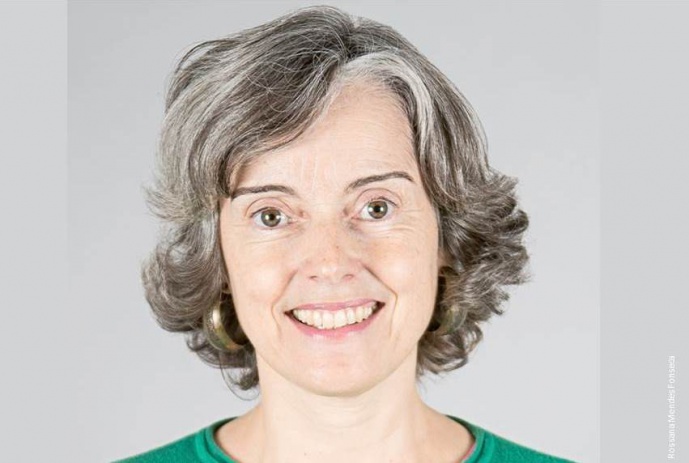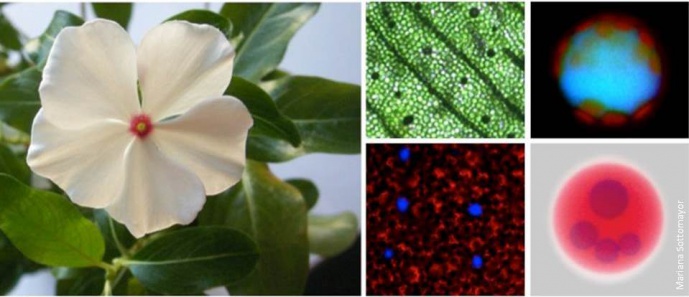Mariana Sottomayor
Assistant Professor
I am Assistant Professor at the Department of Biology from the Faculty of Sciences of the University of Porto (FCUP), and I joined CIBIO-InBIO in 2015 to embrace the project of developing the field of Plant Biology in this institution.
I’ve been working all my research life with an amazing plant that is the source of the first natural agents used in anticancer chemotherapy - Catharanthus roseus (Madagascar periwinkle). This plant accumulates in its leaves extremely low levels of the anticancer monoterpenoid indole alkaloids (MIAs) vinblastine (VLB) and vincristine (VCR), and has become a model for the study of plant specialized metabolism. During my PhD, I investigated the biochemical bases of a key biosynthetic step of VLB and VCR, starting my work in the Department of Botany from the University of Toronto, Canada, and doing most of it at the Department of Plant Physiology from the University of Murcia, Spain. I then developed my own research line at the IBMC – Institute for Molecular and Cell Biology, University of Porto, that eventually grew to become the research group Bioactive Natural Products. During this period, we performed the biochemical and molecular characterization of important components of the MIA pathway, namely involved in anhydrovinblastine synthesis and MIA transmembrane transport. We then engaged in several omic strategies to unravel untapped biosynthetic, transport and regulatory genes of the MIA pathway. We performed, namely, the differential transcriptomic profiling of idioblasts, differentiated cells specialized in the accumulation of the anticancer MIAS, using an original breakthrough method. At CIBIO-InBIO, we are now dealing with the bioinformatic analysis of the C. roseus leaf idioblastome and another promising transcriptomic experience, to identify promising candidate genes with the potential to increase the levels of VLB and VCR in C. roseus leaves. The characterization and tuning of those genes will then be performed as soon as we manage to attract funding for this research line.
In parallel, I’m also deeply committed in what has become the central goal of the PLANTBIO group: the use of our advanced knowledge and skills in PLANT BIOLOGY, together with CIBIO-InBIO expertise in GENOMICS, BIOINFORMATICS and BIODIVERSITY, to harness the potential of national crop biodiversity and wild relatives to face the challenges of yield, sustainability and competitiveness, in face of climate change and emerging pests and diseases. Accordingly, we are currently using the genomics of Portuguese grapevine biodiversity to understand the uniqueness of national varieties, and identify genetic determinants of agronomic and quality/typicity traits. We have just been funded to work with national tomato varieties, and under funding-search are projects aiming to characterize and potentiate the uniqueness of cabbage and onion varieties specific of the important rural region where CIBIO-InBIO is located. My expertise in specialized metabolism will be particularly relevant in what concerns the identification of the molecular determinants and improvement of organoleptic and nutraceutical properties of plant food, as well as for the reduction of toxic and anti-nutritional factors.

